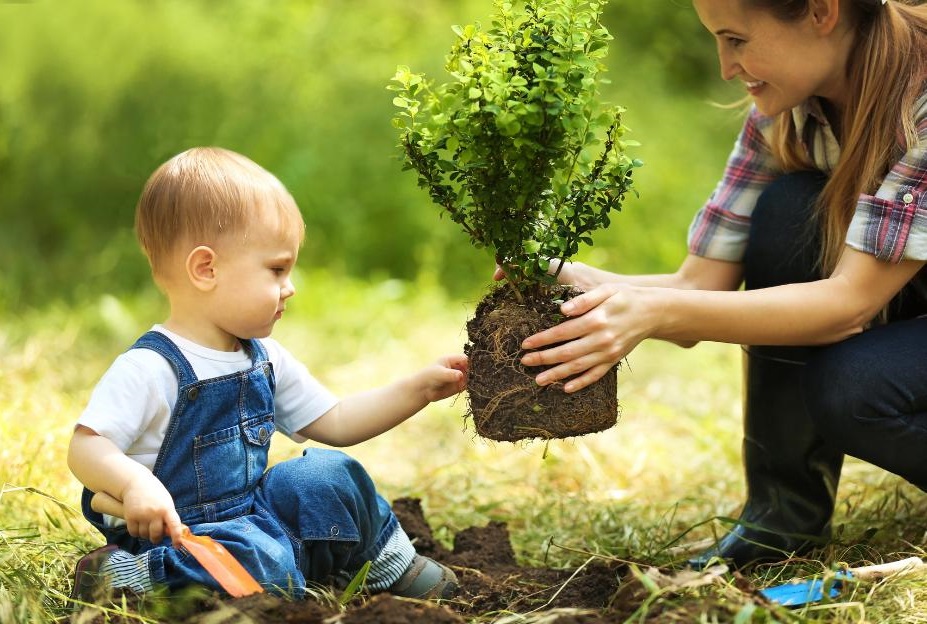Consent and respect for the child has always been a part of Montessori education. When you are teaching a child to respect themselves you are also teaching them to respect others. So, what does this look like when we are talking about babies and young toddlers and children under 3? How much can they understand and process and what is the line when they are learning how to say ‘no’ and ‘stop’ ?
Babies:
Respecting babies by talking to them, watching for non verbal cues and making sure we are letting them know what is going on before just picking them up and whisking them away. We want babies to feel like we are doing things in collaboration with them rather than TO them.
We seek consent in the following instances:
- Picking them up for a nappy change and letting them know what is going on, “I am just going to pick you up’ OR ‘I am just undoing your nappy’ etc remembering to use anatomically correct terminology for your child’s body parts where appropriate
- Before moving them
- Brushing hair, placing lotion on
- Changing them or feeding them – watch for their non verbal cues once they are done feeding or if they don’t want any more
- Carefully observe for their cues and communication efforts

Toddlers:
As children are growing older, through Montessori practice we empower them to make decisions for themselves, become more independent in the practical life activities and have some autonomy. It is also important that we continue to ask before touching their body or doing things ‘for’ them out of respect for them as an individual.
Toddlers especially are learning about the world around them and can be quite strong-willed in their responses when they don’t want to do something. What if they HAVE to do those things and they don’t give consent? Like teeth brushing or dressing etc? There are some tips that will help you to practice consent with your toddler in a way that still respects them because getting frustrated or upset does not help:
- Make it part of routine, so these things are just routine and have to be done in the day like brushing teeth, getting dressed etc – when it is every day it becomes habitual and easier to manage
- Offer them the choice, ‘You JUST don’t want to wear shoes, we need shoes to leave, red or blue shoes – you choose” Okay so what if they don’t choose? Watch this video: https://www.youtube.com/watch?v=daFczy6eJN4
- Get down to their level and speak to them at their level showing respect and a non-authoritative approach
- Acknowledge that it’s hard and they don’t want to do it and make it impersonal “The rule is we need a seat belt on to drive” Watch the importance of acknowledging here: https://www.youtube.com/watch?v=WAEJdF2Axms&t=9s
- Teach natural consequences – When your shoes are on we can leave the house to go to the park. To learn how to give children choices and autonomy watch this clip: Montessori & Discipline explains freedom within limits: https://www.youtube.com/watch?v=nCXFSsBWDrw&t=4s
- Wait it out – Sometimes you need to be patient and wait it out, time can be your best friend and choose your battles.

Role modelling!
Role modelling is a huge part of consent, and consent also happens during play where children need to ask before joining in or showing respect for others during their play. Also, this is the time to teach your child to say “Stop, I don’t like it” towards another child if they need to as well as things like “Hands on your own body” (if another child is physical with them). Practice asking or reminding them to ask others for a hug before they give them, “You LOVE to hug friends, remember we ask before we hug, excuse me would you like a cuddle?”
Discover practical, easy-to-implement strategies to gently navigate your child’s emotional outbursts, while maintaining your own sense of calm.
One last thing, I know societal and cultural implications of not giving family members hugs and kisses can be a touchy subject when you are trying to teach your child consent so approaching it in a way that respects family but also offers your child a choice may be the way to go: “You don’t feel ready to give grandma a hug, we say bye to our family when we leave, would you like to wave or blow a kiss to her, you choose?” Or you may want to simply model for your child, “Bye Grandma I love you thank you for playing with me today!” It really boils down to the situation at hand and knowing the importance of modelling and practicing consent with your child from early on.

Other Resources:
- For more information on consent or to post some specialized questions you can visit this FB group by Cath Hakanson https://www.facebook.com/groups/thatparentgroup
- There is also this great book we have in our Amazon stores that will also help instill consent called C is for consent: (aff link) https://amzn.to/3xQnHQE





